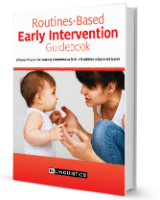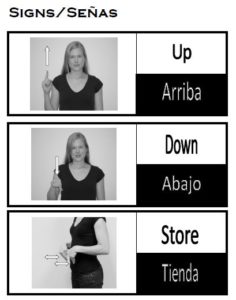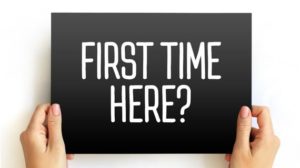
SLPs who provide home-based early intervention services are always looking for a way to streamline the amount of stuff that has slowly been filling their trunk. Here is a curated list of early intervention speech therapy materials that you can easily keep on hand. It has been chosen based on 1) entertainment value, 2) applicability to several goals, 3) ease of transport, and 4) effectiveness (not necessarily in that order!). For those of you who have followed our blog, you know that we are committed to early intervention and have written a book to effectively serve young children.
In the debate on whether to bring materials into the home or use materials that already exist in the home, we definitely side with using things from the home because it increases the likelihood of parents will imitate our strategies after we leave. Below is a list of some of our favorite materials that are common to many households and/or easy to acquire.
Essential Early Intervention Speech Therapy Materials
- Noise Makers – Young children get distracted extremely easily and have short attention spans. Having a rattle, whistle, kazoo, or wind-up toy can immediately bring them back to the activity at hand. Families can even make one with a can and dry beans.
- Bubbles – Working on requesting, turn-taking, using signs, increasing eye-contact, making bilabial productions? Simply blow a bubble and you’ll set the stage for some great intervention opportunities.
- Puzzles- These take the prize for providing the longest activity. They can be great for working on turn-taking, descriptive concepts, spatial concepts, part-whole awareness, and object naming.
- Board Books – Our job is to educate. The quicker we can get a child interested in literacy the quicker we get a child exposed the vocabulary of the world. No need to buy. Put the library on your biweekly commute and trade out your stash to keep it fresh. Board books stand up to the little guys much better than paper.
Blocks – Blocks are effective, and there’s no need to bring huge numbers of them. Bring a baggie with 5-10 that you can use to build, count, name colors, and create letters. Sometimes less is more because it is not so overwhelming.
- Examples of Signed Communication – Let’s face it, we can’t expect parents to remember all of the signs we teach–they are taking in a lot. Bring examples that can be left with them. There are many sources for signing examples. We have included 36 common signs in the Routines-Based Early Intervention Guidebook.
- Parent Resources on Disorders – Imagine you are the parent. You just find out your child has a disorder and you can help at home. How often do we give the parents resources on the disorder so they can begin their learning process and specific steps they can take to improve communication? Here are some free downloadables on communication disorders.
Field tested and practical routines-based early intervention speech therapy materials
In our tool kit we also have the Routines-Based EI Guidebook which contains some of the resources listed above and suggestions on how to nest your therapy goals within the family’s routines.
- 12 Routines-Based Early Intervention Activities – each daily routine lends itself to teaching a specific strategy
- Developmental Norms Charts
- In English and Spanish
- Many opportunities to label items and actions, model phrases, imitate sounds, express preferences
- Parent Strategies
- Signing Instructions
- Easy Data Collection

Features of These Early Intervention Activities
- Based on the experiences of bilingual speech-language pathologists
- Driven by theory and research in the fields of child development, communication development, and early intervention
- Meets the needs of children with many different disabilities: Down Syndrome, Autism, Cerebral Palsy, Language delays
- Early Intervention Children from different language backgrounds: English, Spanish, and bilingual English/Spanish






